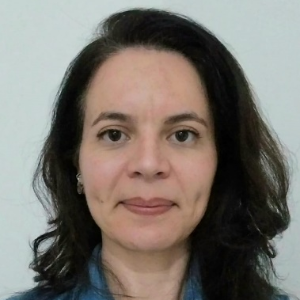Title : Proximal and remote detection of the health of restinga vegetation from the Brazilian coastal region under the influence of mining tailings
Abstract:
Vegetation monitoring through orbital images has been increasingly efficient in environmental studies, such as the Normalized Difference Vegetation Index (NDVI), which has proven to be a simple indicator of vegetation health. Capturing this remote information recovers chlorophyll fluorescence and can be efficiently compared with chlorophyll fluorescence parameters obtained from portable in situ measurement fluorometers. The objective of this study was to compare and define a profile between photosynthetic parameters obtained in situ from plants in the Brazilian coastal Restinga and those obtained via remote sensing. This descriptive effort sought to predict whether the same response profile of vegetation impacted by mining tailings can be visualized using both remote sensing and in situ physiological tools. We used, in six sampling stations on the Brazilian coast impacted by tailings from the collapse of the Fundão dam (Mariana, Brazil), in situ analysis of chlorophyll a fluorescence using a portable fluorometer (HandyPEA, Hansatech Instruments®, King's Lynn, Norkfolk, United Kingdom ). Series captured by the OLI (Operational Land Imager) and TIRS (Thermal Infrared Sensor) sensors on board the Landsat 8 satellite were also used, obtained from 2013 to January 2023, within the official sample polygons of each station. The quantitative results of the normalized difference vegetation index (NDVI) at the sampling stations indicated that the time series presents higher values at the station south of the mouth of the Doce River and in areas further to the north. Temporally, comparing the periods before and after the arrival of tailings on the coast, the amplitude of NDVI values was greater at the Cacimbas (E6) and REBio Comboios (E7) stations, close to the mouth of the Doce River. This variation was more immediate in 2016, as a direct reflection of the arrival of the tailings plume on the coast as an indicator of impact on vegetation. At more distant stations it was possible to observe changes in NDVI later, as seen in Aldeia do Coco (E3). This index had a close correlation with the biophysical parameters of the vegetation. In the in situ temporal analysis, for PIabs, which is an indicator of photosynthetic performance, it was possible to observe the impact of contamination on vegetation, with lower PIabs values at the beginning of monitoring. These results may be related to photoinhibition processes, seen mainly in the rainy period of 2021, affecting photosynthetic performance, and which were also detected by NDVI. Mainly at sampling stations E3, E6 and E7, an increase in PIabs was observed, indicating an increase in their photosynthetic performance over time, as an indication of the vegetation's effective response to changes in environmental conditions. Vegetation monitoring, through vegetation indices, has been improving and proving to be an efficient tool for environmental preservation. It was possible to conclude that the Restinga, although still susceptible to variation in contamination by ore tailings, presents its own temporal and spatial dynamics, pointing to an improvement in photosynthetic responses.
Audience Take Away Notes:
- The effectiveness of vegetation indices combined with in situ analyzes in the ability to detect environmental impacts through changes in photosynthetic parameters
- Chlorophyll a fluorescence consists of a fast and non-invasive method that allows detecting, in loco, the intensity of the impact of stressors on vegetation
- The analysis allowed us to understand the temporal and spatial dynamics of vegetation in response to contamination, indicating an improvement in photosynthetic conditions, despite the persistence of contamination



